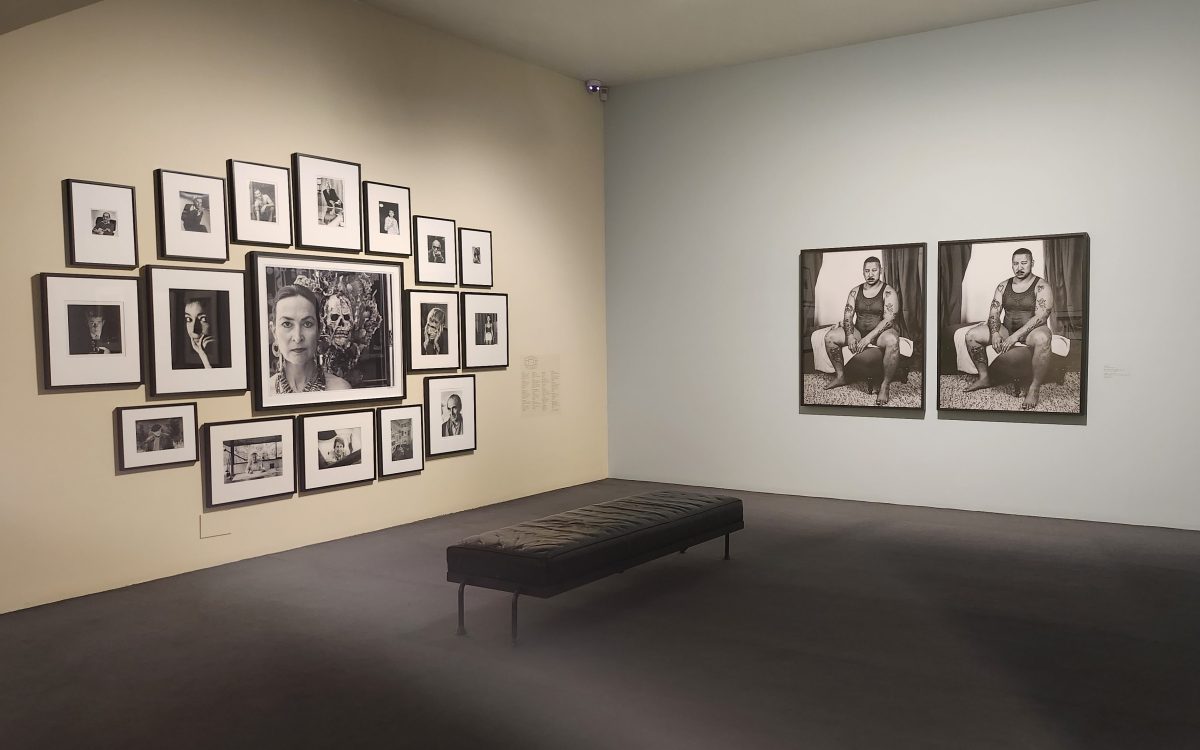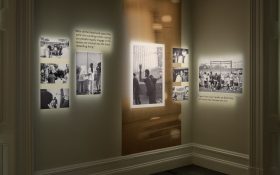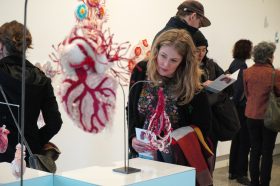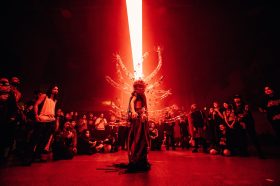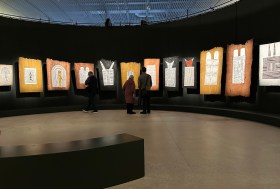100 faces coincides with the Monash Gallery of Art’s new chapter as the Museum of Australian Photography – an exhibition that fully lives up to the sociopolitical and artistic significance of the medium.
In an age when nearly everyone has access to a smartphone camera and, potentially, albums of countless selfies, 100 faces turns our gaze to the myriad possibilities and complexities of portrait photography. It’s mindfully curated by Angela Connor and Stella Loftus-Hills, who consciously guide visitors through the works of over 50 artists.
Though some may disagree, for this reviewer, the exhibition labels of 100 faces provide enough social, historical and artistic context without giving too much away – they are invitations designed to spark thought and curiosity.
Read: Gallery wall labels: short, long, digital or none at all?
Organised into six interlinking sections – Street, Studio, Artists, Intimacy, Adornment and Mortality – the exhibition takes us through different walks of life spanning from the 1860s to today.
Some of the earliest works from the late 19th century recall how photography, once costly and a luxury, became accessible to the masses. Questions of a subject’s autonomy, representation and the viewer’s gaze, however, became an increasingly complex and unavoidable topic of exploration.
Works by Brook Andrew, Michael Riley and Shea Kirk find alternative ways of photographing that share and hand over agency to the photographed.
A collaged selection of photos of artists also highlights this relationship, including Geoffrey Smith’s 1967 photo of Mirka Mora, Ruth Maddison’s Tracey Moffatt prepares for something more (1989) and Lewis Morley’s shot of the late Barry Humphries in 1962.
Section D: Intimacy draws upon a more tender, and perhaps vulnerable, outlook, from Chinese photographer Ren Hang’s Untitled (2015) to US photographer Katy Grannan’s Sugar Camp Road series.
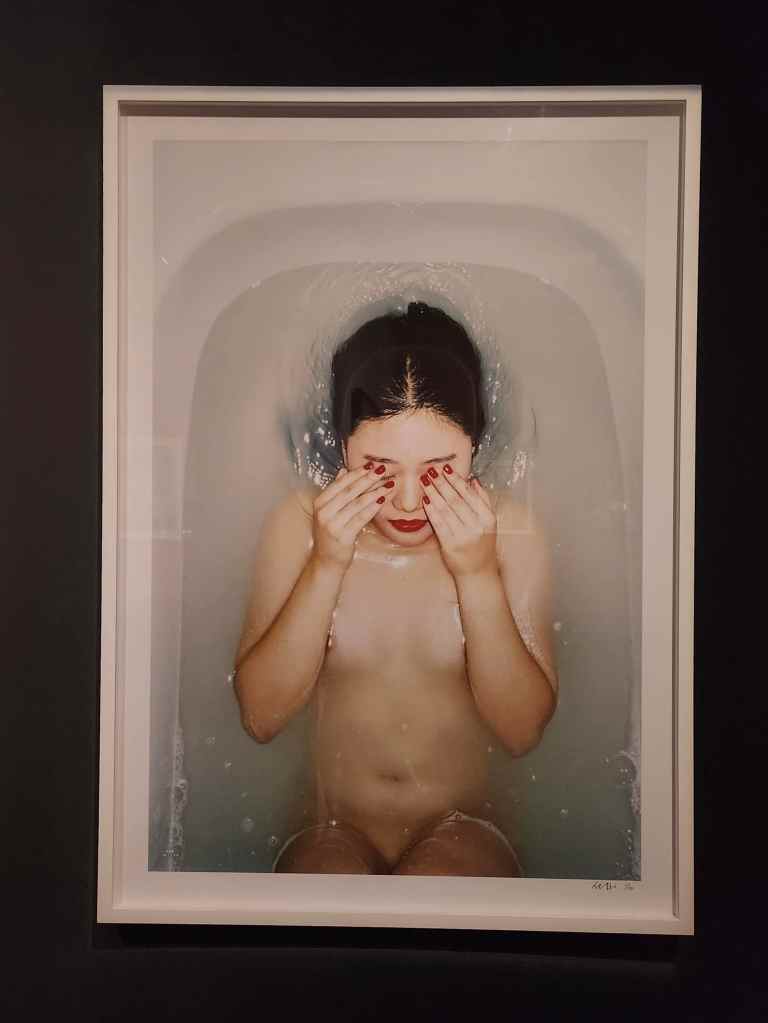
These works sit adjacent to Section F: Morality – an emotional segue into death, separation, war and conflict.
Viewers are required (if they wish) to draw open the curtains to see Striking Worker, Assassinated (1934), captured by Manuel Álvarez Bravo in Mexico during a sugar mill labour strike. The brutally uncensored image is a reminder of our general desensitisation towards violence in the media.
Equally poignant is Gotscho Kissing Gilles, Paris (1993), captured with gut-wrenching sincerity by Nan Goldin, who witnessed Gilles’ health decline and death due to AIDS.
These powerful images highlight the photographer as more than just a witness but, rather, as an incredible visual communicator. I Cried When I Took This Picture (1939) by Weegee (Arthur Fellig) is another example – shot at the scene of a New York City fire where two women cry helplessly at the sight of a young woman and her baby killed in the incident.
Section E: Adornments, brings traditional cultural practices into contemporary contexts. Strong cultural signifiers, such as language, symbols and pattern are used by the artists to challenge presumptions and stereotypes.
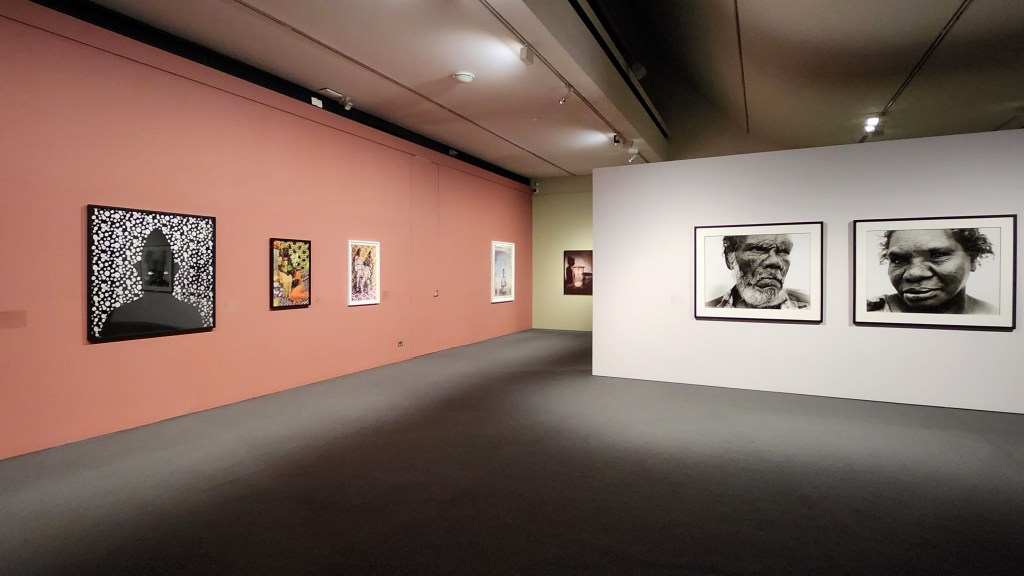
They can be extravagant, such as works by Atong Atem and Leonce Raphael Agbodjelou, or solemn like Tony Albert’s Brothers (2013) and Zhang Huan’s 1/2 (text) (1998), but all point to adornments as an intentional construction, rather than a given.
These works by a wide-ranging mix of Australian and international artists also go to highlight that this diversity and complexity of identities is all around us – it’s not us versus them.
Read: Making visible the mundane tenderness of Black experiences
Seeing this many faces feels rejuvenating, through the different stories, but more so in our shared similarities. It’s a reminder that the emotions and struggles captured are ever present, but it’s through the mindless, mass-reproduced imagery that their resonance, together with our empathy, has been diluted.
100 faces is on view at the Museum of Australian Photography until 28 May; free.
Curators: Angela Connor, MAPh Senior Curator and Stella Loftus-Hills, MAPh Curator.
